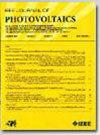A Single Voltage Sensor Bypass Switch-Based Photovoltaic Fault Localization
IF 2.6
3区 工程技术
Q3 ENERGY & FUELS
引用次数: 0
Abstract
Photovoltaic (PV) energy systems are becoming an important source of sustainable energy. However, undiscovered faults within these systems may cause significant efficiency reduction. Localizing these faults to the module level is important for a quick fault diagnosis and maintaining the overall system efficiency. This article presents a novel method to localize intrastring, line-ground, cross-string, and partial shading faults in an基于单电压传感器旁路开关的光伏故障定位
光伏(PV)能源系统正在成为可持续能源的重要来源。然而,这些系统中未被发现的故障可能会导致效率显著降低。将故障定位到模块级别对于快速诊断故障、维护系统整体效率具有重要意义。本文提出了一种新的方法来定位$N$ × $M$光伏系统的串内、线地、串间和部分遮阳故障,直至模块级。该方法利用PV系统的组合盒中的单个电压传感器和每串$ $ rceil N/2 $ rceil旁路开关,在故障期间旁路连接的PV模块。该技术最初依赖于识别有问题的字符串。一旦确定了该字符串,就会找到与该字符串中每个模块相关联的电压。该串中每个模块的电压是通过绕过激活开关对应的每个模块后测量串电压获得的。然后,求解得到的线性方程,得到故障串中各模块的电压。该技术通过仿真和5 × 4小型光伏系统的实验装置进行了验证。实验和仿真结果表明,该方法只需对故障串进行N次电压采样,即可准确定位故障模块。该方法对最大功率点跟踪算法的变化具有较强的鲁棒性,保证了故障的实时有效定位。
本文章由计算机程序翻译,如有差异,请以英文原文为准。
求助全文
约1分钟内获得全文
求助全文
来源期刊

IEEE Journal of Photovoltaics
ENERGY & FUELS-MATERIALS SCIENCE, MULTIDISCIPLINARY
CiteScore
7.00
自引率
10.00%
发文量
206
期刊介绍:
The IEEE Journal of Photovoltaics is a peer-reviewed, archival publication reporting original and significant research results that advance the field of photovoltaics (PV). The PV field is diverse in its science base ranging from semiconductor and PV device physics to optics and the materials sciences. The journal publishes articles that connect this science base to PV science and technology. The intent is to publish original research results that are of primary interest to the photovoltaic specialist. The scope of the IEEE J. Photovoltaics incorporates: fundamentals and new concepts of PV conversion, including those based on nanostructured materials, low-dimensional physics, multiple charge generation, up/down converters, thermophotovoltaics, hot-carrier effects, plasmonics, metamorphic materials, luminescent concentrators, and rectennas; Si-based PV, including new cell designs, crystalline and non-crystalline Si, passivation, characterization and Si crystal growth; polycrystalline, amorphous and crystalline thin-film solar cell materials, including PV structures and solar cells based on II-VI, chalcopyrite, Si and other thin film absorbers; III-V PV materials, heterostructures, multijunction devices and concentrator PV; optics for light trapping, reflection control and concentration; organic PV including polymer, hybrid and dye sensitized solar cells; space PV including cell materials and PV devices, defects and reliability, environmental effects and protective materials; PV modeling and characterization methods; and other aspects of PV, including modules, power conditioning, inverters, balance-of-systems components, monitoring, analyses and simulations, and supporting PV module standards and measurements. Tutorial and review papers on these subjects are also published and occasionally special issues are published to treat particular areas in more depth and breadth.
 求助内容:
求助内容: 应助结果提醒方式:
应助结果提醒方式:


